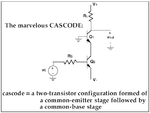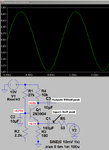LvW
Advanced Member level 6

Can you help with a transistor common base amplifier? i know how it works,
Michael, do you remember your own words?
Do you know how often you have been told in this thread that the gain has no dimension?
Nobody can help you if you don`t learn from the answers given.





